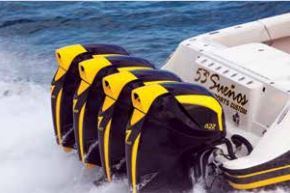9 Tips for Safe Trailer Towing Ed Newman|Mar 27, 2018 9:18 AM Friends of mine in Minneapolis were driving on Highway 35, talking about this and that, minding their own business, when – Wham! A trailer carrying a boat slammed into their car. The trailer had disconnected from the tow vehicle and darted across the […]
You are browsing archives for
Tag: transmission
Remember This When Trying to Find Which ...
Remember This When Trying to Find Which Transmission Fluid You Need John Baker|Jun 26, 2017 8:43 AM Take a look at just a few of the dozens of automatic transmission fluid (ATF) specifications on the market: ATF+4 Mercon V Mercon LV Dexron VI ATF DW-1 ATF T-IV SP-IV Toyota ATF-WS Honda DW (ZF Diamond SP-IV […]
World’s Most Powerful Outboard Motors Re
World’s Most Powerful Outboard Motors Rely on AMSOIL Seven Marine, maker of the world’s most powerful outboard motors, has a saying: We move the people who move the world. The Germantown, Wis. company designs, builds and sells outboard motors that produce up to an astonishing 627 hp and power some of the fastest and most […]
Sold on AMSOIL – Now He Is A Dealer
DEALER: ‘EVERYTHING RUNS BETTER, LASTS LONGER’ How could it be you might ask? The answer lies in the devotion to manufacturing products of the highest possible quality and not reduced to increase profits. The position for a company to do that is risky these days but it’s why AMSOIL customers travel many miles to buy. […]


